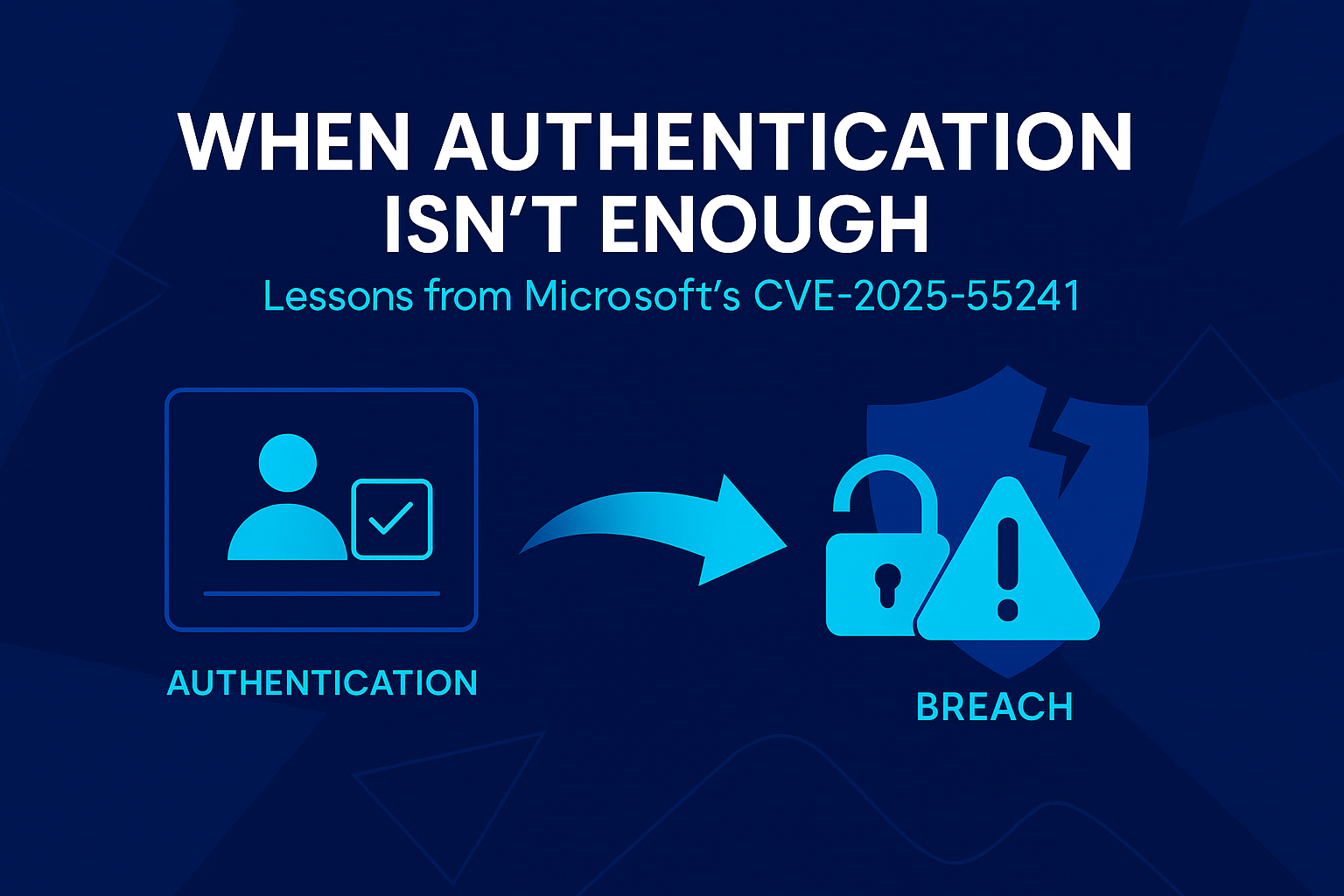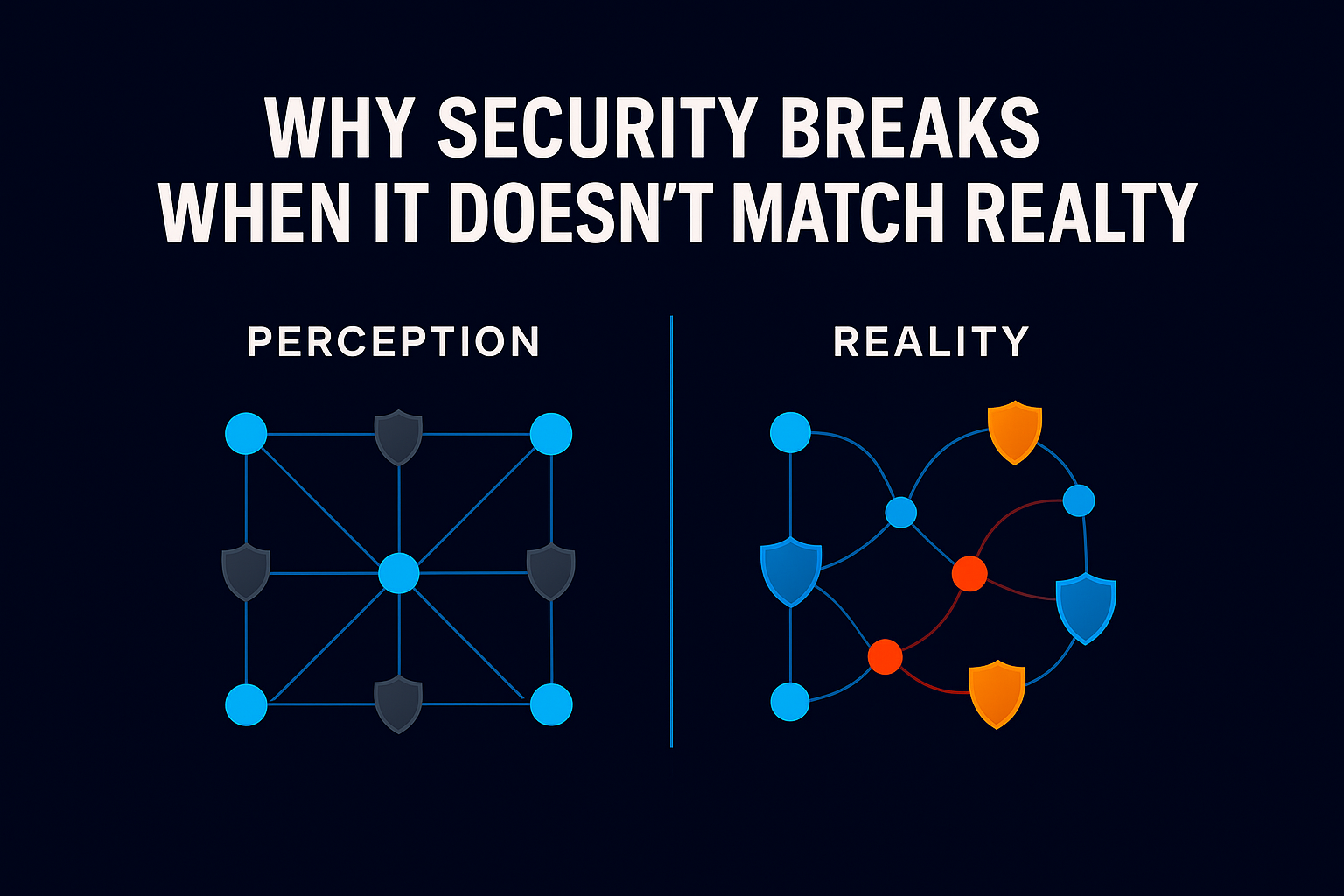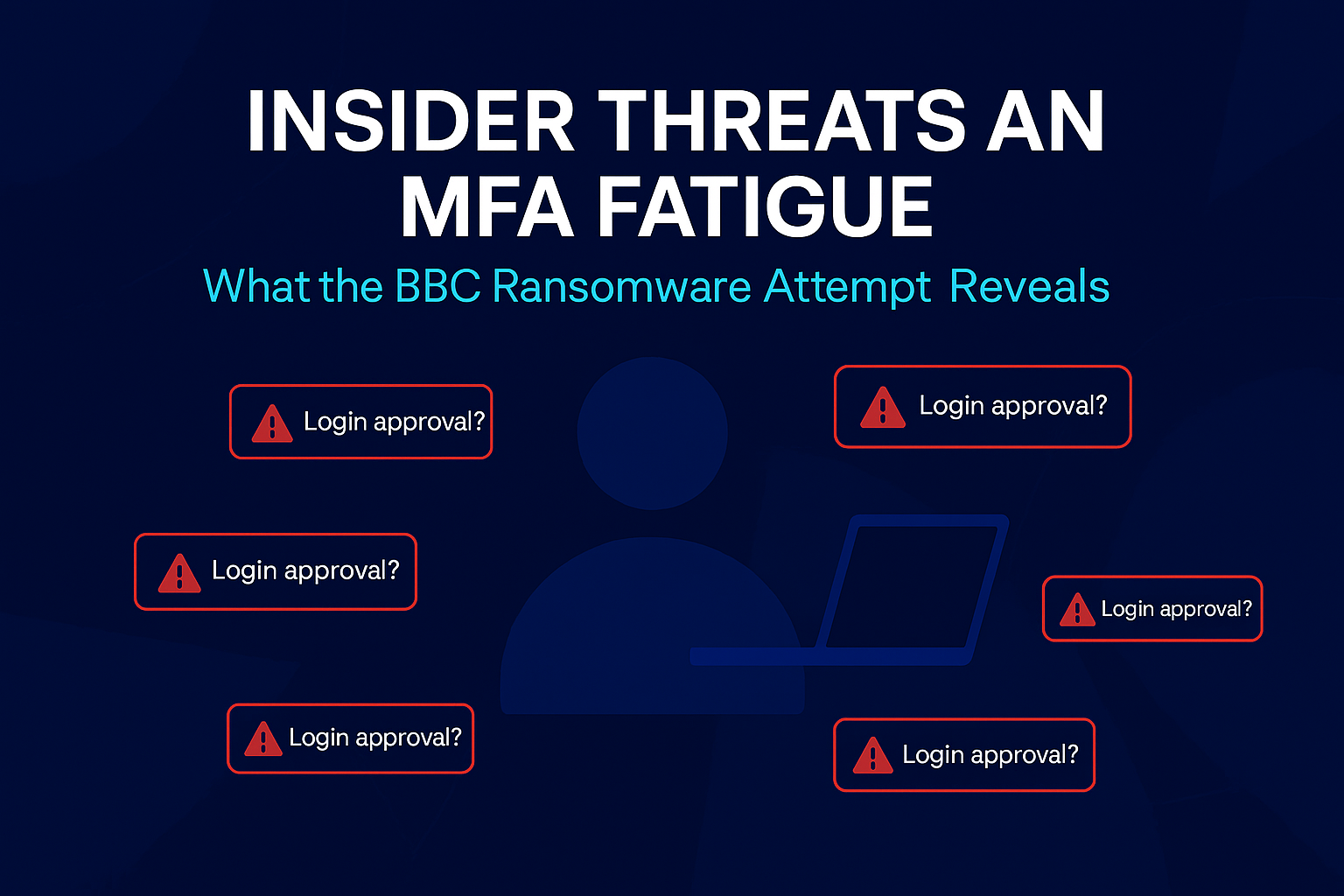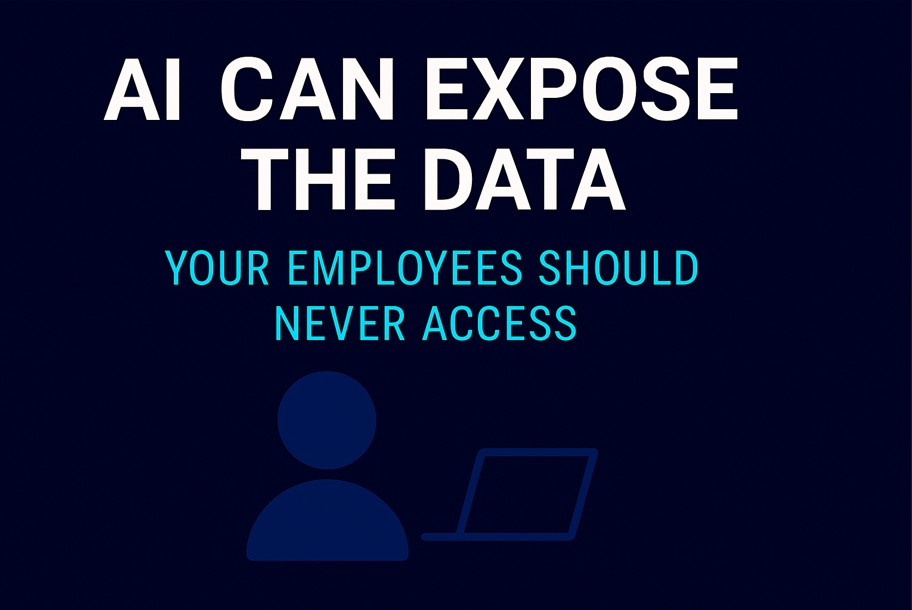When Authentication Isn’t Enough: Lessons from Microsoft’s CVE-2025-55241

Lessons from Microsoft’s CVE-2025-55241
In July 2025, organizations learned a harsh truth: even the most advanced identity systems can fail catastrophically when attackers forge tokens that look legitimate, turning trusted infrastructure into an open door.
Microsoft’s Graph API vulnerability (CVE-2025-55241) wasn’t just another security flaw, it was a masterclass in how modern identity systems can collapse when a single assumption goes unchallenged. The bug allowed attackers to forge tokens that Microsoft’s identity systems fully trusted, enabling them to impersonate administrators, bypass multi-factor authentication, and operate invisibly inside victim environments. In several observed incidents, attackers maintained access for weeks without detection, exploring networks, accessing sensitive data, and staging exfiltration operations with complete freedom.
What made this vulnerability so impactful wasn’t just the scope of access it enabled, but the silence with which it unfolded. Victims would have had no alerts, no unusual logs, and no reason to suspect a compromise. Traditional security controls were simply never triggered, because as far as they were concerned, everything looked normal.
What Happened: The Anatomy of an Invisible Attack
In July 2025, Microsoft identified a critical design flaw in Microsoft’s Graph API that allowed attackers to forge authentication tokens that appeared entirely legitimate. These weren’t stolen passwords or brute-forced credentials.They were fabricated tokens that Microsoft’s own identity systems validated and trusted without question.
With these forged tokens in hand, attackers could have gained unrestricted access to victim environments. They could have:
- Impersonated any user, including global administrators
- Moved freely within victim environments
- Bypassed multi-factor authentication entirely
- Left no trace in identity logs
- Operate completely under the radar of conditional access policies
Because these tokens were accepted after the authentication step, traditional defenses were effectively blind. Identity systems would assume trust once the tokens were validated, and no downstream tools re-examine the session or challenge its legitimacy. As a result, attackers could have operated undetected, often for extended periods, while organizations remain unaware that anything was wrong.
The Technical Breakdown: How Token Forgery Worked
The vulnerability stemmed from a fundamental flaw in how Microsoft’s Graph API validated tokens. Here’s what went wrong:
- The Design Flaw: Microsoft’s Graph API accepted actor tokens without properly validating which tenant they belonged to. It checked whether a token was structurally valid but failed to verify tenant binding.
- The Exploit: Attackers could mint a token outside of the victim’s environment and present it to the API. Because the API didn’t verify that the token originated from the victim’s identity provider, it was trusted as legitimate.
- The Result: Complete impersonation of any user in any tenant, without triggering MFA, without generating logs, and without raising a single alert.
This was not a brute-force attack, nor was it a phishing campaign. It was a design-level flaw that bypassed many of the security controls organizations depend on most, including MFA, conditional access, and identity-based anomaly detection.
Why Traditional Defenses Missed It
The vulnerability exposed a critical blind spot in modern identity security: trust after authentication.
Identity and access management (IAM) tools performed their checks at the front door. They validated that the token looked structurally correct. Once validated, the security infrastructure assumed trust. No downstream system challenged what happened after that initial “legitimate” login.
This is the fundamental problem: when security ends at authentication, everything that follows is invisible.
A Data-Centric Layer Could Have Changed the Outcome
There’s a lesson in CVE-2025-55241 that goes beyond patching and token validation: identity signals alone are not enough. Once an attacker is holding what appears to be a legitimate token, the identity layer becomes effectively blind. What matters next is what the session actually does, and that means looking at data access itself.
This is where a data-centric approach, like the one used by Ray Security, changes the equation. Ray Security doesn’t rely solely on identity events or Microsoft’s logs to decide what’s normal. It builds an independent, agnostic view of how data is accessed, watching which files are touched, in what sequence, at what scale, and by whom.
Even if a forged token slips through identity defenses, its behavior cannot hide. The moment it begins accessing data in an unusual pattern, triggering large downloads, probing new repositories, Ray Security’s detection engine flags the anomaly.
From there, the platform can respond in real time: trigger step-up authentication (like an MFA challenge), kill the session, or remove permissions altogether. Most data , which Ray Security protects by default, would remain inaccessible, and bulk exfiltration attempts would be blocked. Instead of silent compromise and data theft, the attack would have been contained within minutes.
The Broader Lesson: Trust Nothing, Verify Everything
CVE-2025-55241 reinforces a critical truth we’ve always known at Ray Security: identity is not enough. Modern attackers don’t need to break authentication, they just need to look legitimate long enough to reach your data. And if your security strategy stops at the login page, your most valuable assets remain exposed
Defending against this class of attack requires more than validating tokens. It requires continuous scrutiny of how those tokens are used, particularly when they start interacting with sensitive data. By shifting detection and response closer to the data layer, organizations gain a powerful line of defense against identity bypass techniques that traditional tools simply can’t see.
Because in today’s threat landscape, the real battle begins after the attacker gets in.
The lesson is clear: identity may open the door, but behavior tells you who’s really inside.





